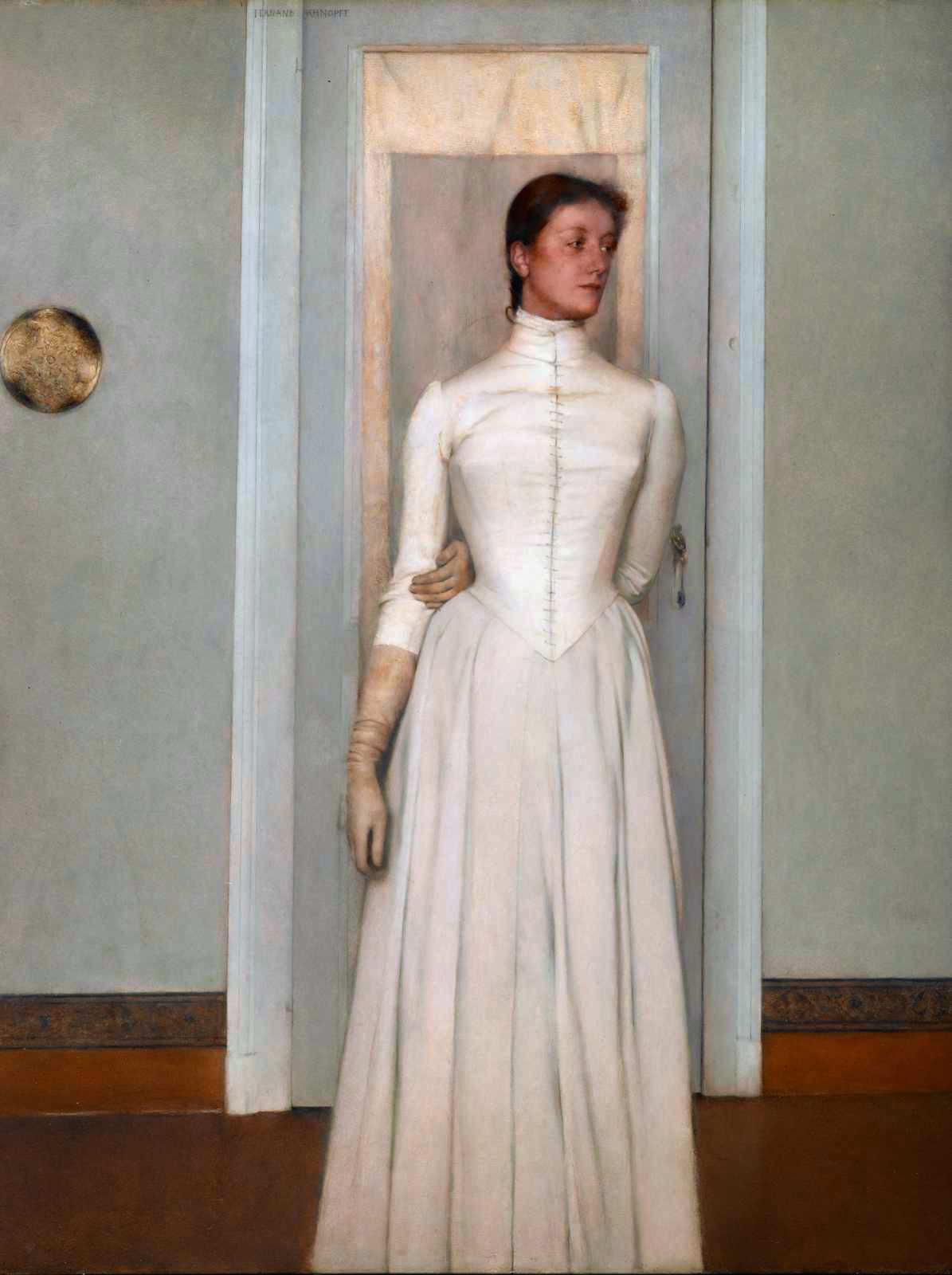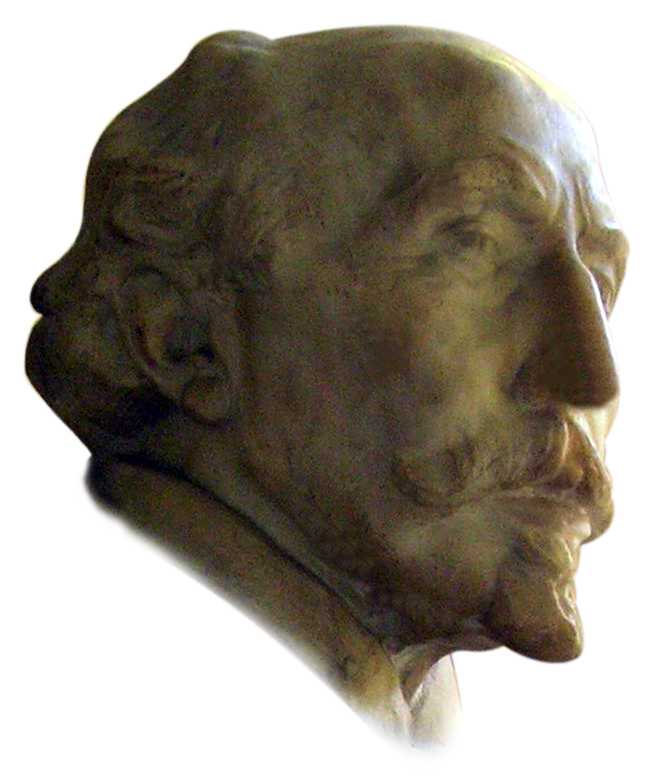|
Groupe Des XX
''Les XX'' ( French; "''Les Vingt''"; ; ) was a group of twenty Belgian painters, designers and sculptors, formed in 1883 by the Brussels lawyer, publisher, and entrepreneur Octave Maus. For ten years, they held an annual exhibition of their art; each year 20 other international artists were also invited to participate in their exhibition. Painters invited include Camille Pissarro (1887, 1889, 1891), Claude Monet (1886, 1889), Georges Seurat (1887, 1889, 1891, 1892), Paul Gauguin (1889, 1891), Paul Cézanne (1890), and Vincent van Gogh (1890, 1891 retrospective). ''Les XX'' was in some ways a successor to another group, L'Essor. The rejection of Ensor's '' The Oyster Eater'' in 1883 by L'Essor Salon, following the earlier rejection by the Antwerp Salon, was one of the events that led to the formation of ''Les XX''. In 1893, the society of ''Les XX'' was transformed into "''La Libre Esthétique''". History ''Les XX'' was founded on 28 October 1883 in Brussels and held annual s ... [...More Info...] [...Related Items...] OR: [Wikipedia] [Google] [Baidu] |
Quatuor Ysaÿe
In music, a quartet or quartette (, , , , ) is an ensemble of four singers or instrumental performers; or a musical composition for four voices and instruments. Classical String quartet In classical music, one of the most common combinations of four instruments in chamber music is the string quartet. String quartets most often consist of two violins, a viola, and a cello. The particular choice and number of instruments derives from the registers of the human voice: soprano, alto, tenor and bass (SATB). In the string quartet, two violins play the soprano and alto vocal registers, the viola plays the tenor register and the cello plays the bass register. Composers of notable string quartets include Joseph Haydn ( 68 compositions), Wolfgang Amadeus Mozart (23), Ludwig van Beethoven (16), Franz Schubert (15), Felix Mendelssohn (6), Johannes Brahms (3), Antonín Dvořák (14), Alexander Borodin (2), Béla Bartók (6), Elizabeth Maconchy (13), Darius Milhaud (18), Heitor Villa-Lobos ( ... [...More Info...] [...Related Items...] OR: [Wikipedia] [Google] [Baidu] |
Alfred William Finch
Alfred William (Willy) Finch (1854 –1930) was a ceramist and painter in the pointillist and Neo-Impressionist style. Born in Brussels to British parents, he spent most of his creative life in Finland. Life and work Alfred William Finch was born on 28 November 1854 in Brussels, Belgium to British parents, Joseph Finch (a businessman) and Emma Finch (née Holach). He spent his youth in Ostende. When he was twenty-four he began studying for one year in Brussels at the Académie Royale des Beaux-Arts. On 28 October 1883 he became a founding member of Les XX, a group of twenty Belgian painters, designers and sculptors, who rebelled against the prevailing artistic standards and outmoded academism. He was impressed by the works of Georges Seurat and Paul Signac and changed his own painting style from a more realistic approach into a pointillistic style. In the following years, Finch became one of the leading representatives of his style in Belgium, along with Théo van Rysselb ... [...More Info...] [...Related Items...] OR: [Wikipedia] [Google] [Baidu] |
Fernand Khnopff
Fernand Edmond Jean Marie Khnopff (12 September 1858 – 12 November 1921) was a Belgian symbolist painter. Life Youth and training Fernand Khnopff was born to a wealthy family that was part of the high bourgeoisie for generations. Khnopff's ancestors had lived in the Vossenhoek area of Grembergen Flanders Flanders (, ; Dutch: ''Vlaanderen'' ) is the Flemish-speaking northern portion of Belgium and one of the communities, regions and language areas of Belgium. However, there are several overlapping definitions, including ones related to culture, ... since the early 17th century but were of Austrian and Portuguese people, Portuguese descent. Most male members of his family had been lawyers or judges, and young Fernand was destined for a juridical career. In his early childhood (1859–1864), he lived in Bruges where his father was appointed Substitut Du Procureur Du Roi. His childhood memories of the medieval city of Bruges would play a significant role in his later wo ... [...More Info...] [...Related Items...] OR: [Wikipedia] [Google] [Baidu] |
Théo Van Rysselberghe
Théophile "Théo" van Rysselberghe (23 November 1862 – 13 December 1926) was a Belgian neo-impressionist painter, who played a pivotal role in the European art scene at the turn of the twentieth century. Biography Early years Born in Ghent to a French-speaking bourgeois family, he studied first at the Academy of Ghent under Theo Canneel and from 1879 at the Académie Royale des Beaux-Arts in Brussels under the directorship of Jean-François Portaels. The North African paintings of Portaels had started an orientalist fashion in Belgium. Their impact would strongly influence the young Théo van Rysselberghe. Between 1882 and 1888 he made three trips to Morocco, staying there in total a year and a half. Age only eighteen, he had already participated at the Salon of Ghent, showing two portraits. Soon afterwards followed his ''Self-portrait with pipe'' (1880), painted in somber colours in the Belgian realistic tradition of the times. His ''Child in an open spot of the for ... [...More Info...] [...Related Items...] OR: [Wikipedia] [Google] [Baidu] |
L'Art Moderne
''L'Art Moderne'' was a weekly review of the arts and literature published in Brussels from March 1881 until the outbreak of the First World War in August 1914. It was established by a number of lawyers based in Brussels who felt the need for a regular overview of the cultural life of the capital. The leading figures in the founding group were Edmond Picard and Octave Maus.Jane Block, "Les XX and La Libre Esthétique", in ''Impressionism to Symbolism: The Belgian Avant-Garde, 1880-1900'', edited by MaryAnne Stevens with Robert Hoozee (Royal Academy of Arts, London, in association with Ludion Press, Ghent, 1994), p. 41. The poet and art critic Émile Verhaeren (also a lawyer) soon became a frequent contributor. Each issue was eight pages long, and reviews were unsigned. Initially the review's editorial line opposed "Art for art's sake" (promoted by the rival ''La Jeune Belgique'') under the alternative slogan ''l'art social'' ("social art"), insisting that art should serve progre ... [...More Info...] [...Related Items...] OR: [Wikipedia] [Google] [Baidu] |
Emile Verhaeren
Emil or Emile may refer to: Literature *''Emile, or On Education'' (1762), a treatise on education by Jean-Jacques Rousseau * ''Émile'' (novel) (1827), an autobiographical novel based on Émile de Girardin's early life *''Emil and the Detectives'' (1929), a children's novel *"Emil", nickname of the Kurt Maschler Award for integrated text and illustration (1982–1999) *''Emil i Lönneberga'', a series of children's novels by Astrid Lindgren Military *Emil (tank), a Swedish tank developed in the 1950s * Sturer Emil, a German tank destroyer People *Emil (given name), including a list of people with the given name ''Emil'' or ''Emile'' *Aquila Emil (died 2011), Papua New Guinean rugby league footballer Other * ''Emile'' (film), a Canadian film made in 2003 by Carl Bessai *Emil (river), in China and Kazakhstan See also * * *Aemilius (other) * Emilio (other) * Emílio (other) *Emilios (other) Emilios, or Aimilios, (Greek: Αιμίλιος) is ... [...More Info...] [...Related Items...] OR: [Wikipedia] [Google] [Baidu] |
Edmond Picard
Edmond Picard (15 December 1836 – 19 February 1924) was a Belgian jurist and writer. He was nominated for the Nobel Prize in Literature five times. Career He was lawyer at the court of appeal and the Court of Cassation of Belgium. He was also head of the Belgian bar association, professor of law, playwright and journalist. Involved in politics, he was senator for the Belgian Labour Party. He also was a patron Patronage is the support, encouragement, privilege, or financial aid that an organization or individual bestows on another. In the history of art, arts patronage refers to the support that kings, popes, and the wealthy have provided to artists su ... of the arts. References External links * {{DEFAULTSORT:Picard, Edmond 19th-century Belgian writers Belgian male writers Belgian jurists Belgian journalists Male journalists 1836 births 1924 deaths Members of the Senate (Belgium) Belgian Labour Party politicians 19th-century male writers Belgian magazin ... [...More Info...] [...Related Items...] OR: [Wikipedia] [Google] [Baidu] |
Paul Verlaine
Paul-Marie Verlaine (; ; 30 March 1844 – 8 January 1896) was a French poet associated with the Symbolist movement and the Decadent movement. He is considered one of the greatest representatives of the ''fin de siècle'' in international and French poetry. Biography Early life Born in Metz, Verlaine was educated at the ''Lycée Impérial Bonaparte'' (now the Lycée Condorcet) in Paris and then took up a post in the civil service. He began writing poetry at an early age, and was initially influenced by the Parnassien movement and its leader, Leconte de Lisle. Verlaine's first published poem was published in 1863 in ''La Revue du progrès'', a publication founded by poet Louis-Xavier de Ricard. Verlaine was a frequenter of the salon of the Marquise de Ricard (Louis-Xavier de Ricard's mother) at 10 Boulevard des Batignolles and other social venues, where he rubbed shoulders with prominent artistic figures of the day: Anatole France, Emmanuel Chabrier, inventor-poet and humoris ... [...More Info...] [...Related Items...] OR: [Wikipedia] [Google] [Baidu] |
Théodore De Wyzewa
Théodore is the French version of the masculine given name Theodore. Given name * Théodore Caruelle d'Aligny (1798–1871), French landscape painter and engraver *Théodore Anne (1892–1917), French playwright, librettist, and novelist * Théodore Année (1810 – after 1865), French horticulturist * Théodore Jean Arcand (born 1934), Canadian diplomat *Théodore Aubanel (1829–1886), Provençal poet *Théodore Aubert (1878–1963), Swiss lawyer and writer * Théodore Bachelet (1820–1879), French historian and musicologist * Théodore Bainconneau (fl. 1920), French wrestler *Théodore Ballu (1817–1885), French architect *Théodore de Banville (1823–1891), French poet and writer * Théodore Baribeau (1870–1937), Quebec politician *Théodore Baron (1840–1899), Belgian painter *Théodore Barrière (1823–1877), French dramatist *Théodore Baudouin d'Aubigny (1780–1866), French playwright *Théodore de Bèze (1519–1605), French Protestant theologian *Théodore Botrel ... [...More Info...] [...Related Items...] OR: [Wikipedia] [Google] [Baidu] |
Stéphane Mallarmé
Stéphane Mallarmé ( , ; 18 March 1842 – 9 September 1898), pen name of Étienne Mallarmé, was a French poet and critic. He was a major French symbolist poet, and his work anticipated and inspired several revolutionary artistic schools of the early 20th century, such as Cubism, Futurism, Dadaism, and Surrealism. Biography Mallarmé was born in Paris. He was a boarder at the ''Pensionnat des Frères des écoles chrétiennes à Passy'' between 6 or 9 October 1852 and March 1855. He worked as an English teacher and spent much of his life in relative poverty but was famed for his '' salons'', occasional gatherings of intellectuals at his house on the rue de Rome for discussions of poetry, art and philosophy. The group became known as ''les Mardistes,'' because they met on Tuesdays (in French, ''mardi''), and through it Mallarmé exerted considerable influence on the work of a generation of writers. For many years, those sessions, where Mallarmé held court as judge, jester, ... [...More Info...] [...Related Items...] OR: [Wikipedia] [Google] [Baidu] |
Symbolism (arts)
Symbolism was a late 19th-century art movement of French art, French and Art of Belgium, Belgian origin in poetry and other arts seeking to represent absolute truths symbolically through language and metaphorical images, mainly as a reaction against Naturalism (literature), naturalism and Realism (arts), realism. In literature, the style originates with the 1857 publication of Charles Baudelaire's ''Les Fleurs du mal''. The works of Edgar Allan Poe, which Baudelaire admired greatly and translated into French, were a significant influence and the source of many stock Trope (literature), tropes and images. The aesthetic was developed by Stéphane Mallarmé and Paul Verlaine during the 1860s and 1870s. In the 1880s, the aesthetic was articulated by a series of manifestos and attracted a generation of writers. The term "symbolist" was first applied by the critic Jean Moréas, who invented the term to distinguish the Symbolists from the related decadent movement, Decadents of literat ... [...More Info...] [...Related Items...] OR: [Wikipedia] [Google] [Baidu] |


_Portret_van_Willy_Finch.jpg)





